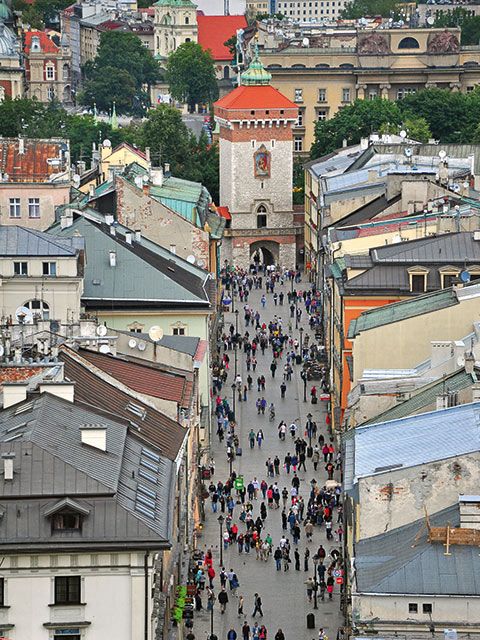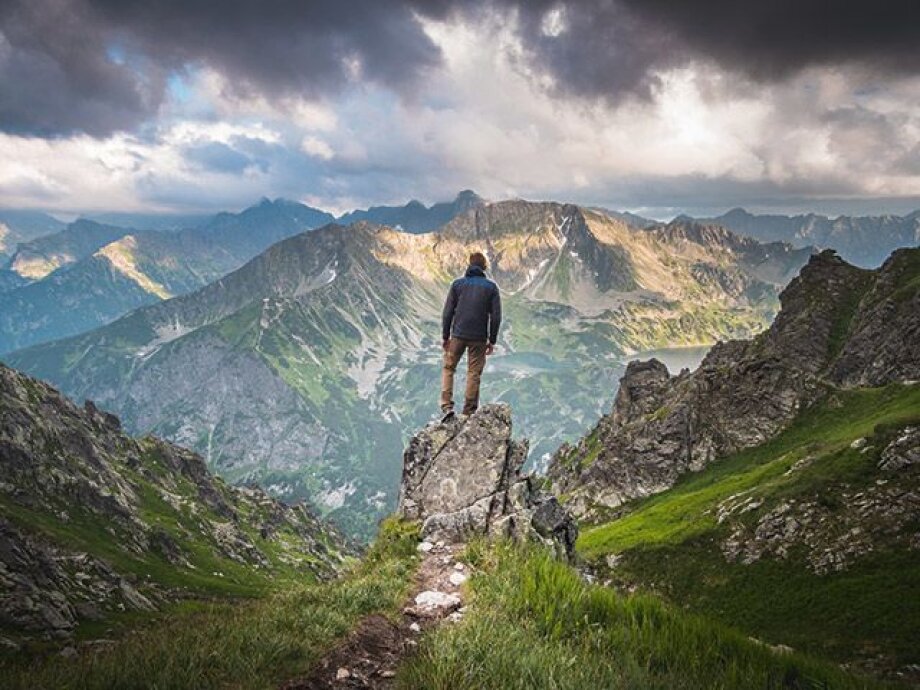SUSTAINABLE TOURISM IS ABOUT minimizing the negative impact on the environment, community and local economy in order to preserve the site for future generations. It is a holistic approach that engages the government, locals, service providers and tourists alike. Achieving sustainability is not an ultimate state of affairs but a continuous process that requires constant adjustments, monitoring impact and introducing solutions. An early mention of sustainability in tourism appeared in the UN Brundtland Report published in 1987. The report draws international attention to issues that accelerate through economic globalization and are associated with mass tourism. Alternative tourism is sometimes proposed as an antidote to the impact of mass travel as it encompasses the concept of conscious experiencing (e.g., wine tourism, voluntary service tourism) and outdoor physical activities (e.g., hiking, ski mountaineering). Regardless, the ideology of alternative tourism has always been challenged for its ambiguity and that it does not necessarily rule out mass travel. At the same time, restricting the number of tourists in developing regions would significantly slow down their economic growth, especially where tourism is the main source of income.
ALL-INCLUSIVE SUSTAINABILITY
It has become apparent that balance is needed between profitability and protection. An independent commission was to investigate the scale of the problems related to touristry and to suggest specific solutions that could be applied internationally. The following criteria are often used to form a framework for sustainable tourism:
- a quota of visitors and their frequency that allow preserving a site, its biodiversity, the landscape and natural resources (environmental capacity)
- a quota of visitors and their frequency that leave no negative impact on local culture and community (societal capacity)
- the capability of infrastructure, transportation and communication (accessibility and affordability)
- state of information and communication technology (ICT status)
- level of profitability from tourism that contributes to the local growth while preventing the commercialization of culture (economic viability)
- level of empowerment within local communities in decision making around tourism management (local control)
- ability to fulfill visitors’ needs and expectations (safety and attractiveness)
GLOBETROTTING FIGURES
There are two categories of forces behind traveling: push and pull. People are pushed by their need to bond with nature, interact with other people, visit friends and relatives, conduct business, do sport, see famous landmarks, follow their dreams or just rest. What pulls them, on the other hand, are rich cultural heritage, picturesque (“instagrammable”) landscapes, wildlife or nightlife. Wanderlust is a powerful thing. There is neither a way of barring it completely nor is it reasonable. People have always traveled but the sheer scale of tourism these days is what has become an issue. There were under half a million international tourist arrivals thirty years ago, according to the UNWTO report. The trend increased steadily until 2009 when the number of tourists declined by around 4 percent, largely due to the economic crisis. Last year’s records show 1.5 billion international tourist arrivals worldwide – a 4 percent increase from the year before. The trend is said to stay stable this year despite uncertainty around Brexit, political tensions, the collapse of a few low-cost airlines and Thomas Cook bankruptcy. The situation is changing dramatically due to the outbreak of COVID-19 and the widespread suspension of flights all around the world.
TOURISM IN POLAND
The reduced number of visitors from China may be noticeable in Central and Eastern Europe as the region becomes increasingly popular among Chinese. According to Robert Andrzejczyk, the president of the Polish Tourism Organization (POT), the number of Chinese tourists grew by more than 20 percent in the first half of 2018. Poland was also distinguished as an attractive destination in a ceremony led by China Travel Agent magazine the same year. Overall, tourism in Poland contributes to approximately 5 percent of the GDP and the number of foreign tourist arrivals reached nearly 16.3 million in the first three quarters of 2019. Various sources claim that Poland reached a record high number of visitors (20 million) last year. However, there is no official report to prove it yet. Even though it would be an impressive number for Poland, it is not so impressive on a global scale. A tourism index ranking countries on the basis of popularity (T&T Competitiveness Index 2019, World Economic Forum) places Poland on the 42nd place out of 140 listed destinations. Polish Supreme Audit Office (NIK) reports that tourists spent PLN 34.5 billion in Poland in 2018. That is more than the estimated cost of building the Solidarity Transport Hub (CPK), approximately 40km southwest of Warsaw.
TOURISM AND POLITICS
Despite tourism being such a significant sector in the Polish economy, the government needs to step up their game. NIK remarks on slow-moving legislative changes to better control the promotion and management of tourism in the country. The audit summary purports that few regional tourist organizations own their integrated tourism development strategy. Those who possess it, usually lack clear goals and are unable to measure the effectiveness of executed actions.
Accountability for the state of tourism is currently shared among the development ministry, POT, local governments and tourism-related service providers. Tourism-related matters were placed under the sport and tourism ministry until November 2019. When asked about tourism policy, the development ministry cites a “Tourism Development Program” as the key strategic documentation. The document contains some obsolete data (as reported by NIK) and will expire by the end of 2020. The ministry still commits to funding the following assignments this year: restoring and delineating tourist routes, improving accessibility for senior and disabled travelers, improvement of tourists’ safety, financial support and creation of tourism brands. The ministry spent nearly PLN 61 million on the sector last year and assesses their execution of the program as effective. The ministry spokesperson did not provide specific numbers to quantify this claim.
 VISITOR RULES
VISITOR RULES
People tend to be more wasteful once they become guests. Travelers are less keen to save water or electricity as they will never see the bill. They are also prone to purchasing disposable utensils and containers, use plastic mini bottles and are usually not familiar with the local waste management rules. Specialist media, books, podcasts and vlogs contribute to raised awareness of sustainable tourism. Still, the public would need to reach out and search for reliable information. Social media users have become increasingly aware that posts with them engaged in environmentally harmful or socially questionable activities would expose them to public disdain, hate attacks, account suspension or fines. It often takes a gross act of irresponsible behavior to draw the government’s attention to the problem. Occasionally local residents, left to their own devices, seek solutions themselves. Exasperated residents of Kraków and its district of Kazimierz launched a campaign in 2018 as their appeal to disturbing flocks of tourists. One thousand posters, saying “Noise Annoys!” and “Keep Calm And Let The Residents Sleep”, were printed in English and distributed across the busiest parts of the city.
LAST CALL
The state of tourism is a shared responsibility of all stakeholders. However, the strategy of making it sustainable needs to have a clear focus, smart goals, be set by the state and controlled by the law. The government has the tools to cascade accountability through regional, local authorities, tourist businesses and individuals. No site can ever be sustainable enough but it is about the genuine efforts and monitoring of the effects that may allow future generations to discover what we leave behind.












 VISITOR RULES
VISITOR RULES




